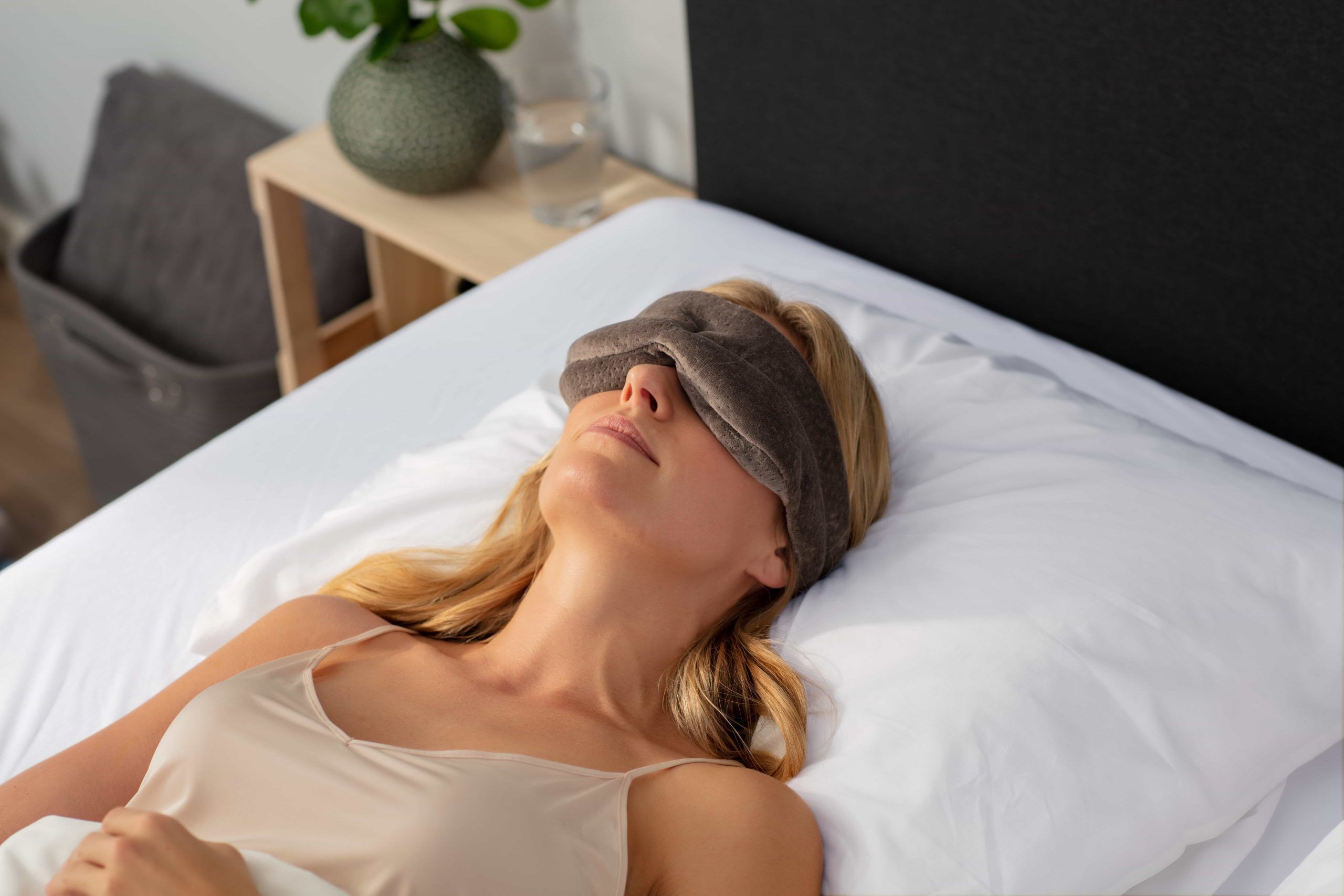Beds that don’t support the body well can cause back pain by keeping people in the wrong sleeping positions and straining their muscles.
If a person’s mattress doesn’t fit their needs, it can hurt the quality of their sleep and cause pain in the body. Mattresses that are both comfortable and good for your back can help relieve letting the parts of the spine relax and heal.
Here is a complete guide on how to choose a mattress for back pain. When looking for the right mattress, you have a lot of options. People with back pain can choose a supportive and comfortable bed with the following tips.
What Sort of Mattress Is Best for Back Pain?
Choosing the right mattress type is an essential part of the process. Based on their construction methods and materials, nearly all mattresses on the market at the moment fall into one of five categories:
Some aspects are consistent among brands and models, but there are also significant differences. As a result, a mattress’s anticipated feel and functionality might vary significantly from one type to the next.
1. Hybrid
Hybrid mattresses use foam, latex, micro-coils, down, and wool to support innerspring. The hybrid luxury layers are more resilient than the innerspring layers. Hybrid beds incorporate the best features of many bed kinds while minimizing their downsides. Contoured hybrid mattresses relieve pressure points. These beds provide improved temperature management due to coil airflow.
2. Innerspring
Innerspring mattresses are mostly metal coils. Layering cotton, polyester, or foam on coils doesn’t affect mattress performance. Innerspring mattresses are now less standard than foam, latex, and hybrid mattresses. These are some of the cheapest options. You can buy a mattress topper with the money you save.
3. Latex
The inner structure of a latex mattress consists entirely of latex. Most mattresses use natural latex from trees. The comfort layers and support core might use latex in various ways. Latex mattresses provide light shape and support without sinking.
4. Airbed
Inflatable chambers support airbeds. Remote controls or smartphone apps allow real-time mattress hardness adjustment. A layer of foam, latex, cotton, polyester, or wool surrounds the mattress’s core. Airbeds benefit most from adjustability. It’s excellent for back pain sufferers since they can “tune in” their bed’s firmness to their current pain and posture.
5. Foam
Foam layers make up the comfort system and support the core of an all-foam mattress. Memory foam is one type of polyurethane foam (polyfoam). Foam mattresses can use latex, while coils cannot. Deeply carved. Memory foam is the softest. Side sleepers’ sharp impact points require these mattresses’ corresponding padding.
Can Sleeping Positions Affect Back Pain?

Sleeping positions produce pressure points that cause back pain. To minimize back discomfort, patients should sleep on a mattress that supports these pressure areas. The best mattress for each sleeper is listed below:
1. Back Sleeper
Back sleepers have the most lumbar pressure points. Soft mattresses shrink the abdomen, hips, and back, disrupting spine alignment. Hard mattresses don’t support the lower back’s natural curve. Back sleepers prefer medium-firm to firm mattresses.
2. Side Sleeper
Side sleepers’ broadest portions, such as the hips and shoulders, are the most affected. Their mattresses must be soft and shaped enough to cushion these spots without causing their body to sink and impair alignment. Medium-firm mattresses are great for side sleepers.
3. Stomach Sleeper
Stomach sleepers generally have neck and lumbar pain points. To get the most spine support when sleeping, they should consider their mattress and pillow thickness. Tall pillows overbend their upper back and neck, whereas soft mattresses lower their pelvis. Stomach sleepers need firm beds and thin pillows.
4. Combination Sleeper
These sleepers switch between side, back, and stomach positions at night. Medium-firm mattresses mix pressure-relieving softness with spine-aligning firmness, making them ideal for combination sleepers.
Considerations for Choosing a Mattress for Back Pain
Mattresses are the main reason back pain sufferers have trouble sleeping. Contrary to popular belief, the best mattress is not the firmest. There is no universally comfortable mattress.
Due to the many aspects, finding a mattress for low back discomfort is difficult. As the points discussed by the best mattress advisor, the most excellent mattress for back and body support should have these features:
1. Firmness Level
The initial feeling when lying on a mattress is its firmness. Most mattress manufacturers evaluate their goods from 1 to 10, with 1 being the softest and 10 being the firmest. Even a medium-firm mattress can correct the spine. Most people need 6-7 firmness mattresses for back support and pressure point relief.
Examining the mattress’s softness is crucial because an extra-firm mattress may exert too much strain on the spine and create back pain. However, extra-soft mattresses sink the back, causing misalignments.
Patients should consider their weight and mattress firmness while purchasing a mattress. 230-pounders put more significant pressure on the mattress than 130-pounders. Heavy sleepers need a firmer mattress to avoid spine misalignment because the mattress sinks more. Lightweight sleepers need softer mattresses to cushion their pressure spots.
2. Zoned Support
A sleeping person’s weight isn’t evenly distributed. Heads and backs weigh more. The mattress sinks more in these locations due to pressure. Mattress sinkage frequently causes spine misalignments.
Memory foam mattresses with zoned support are great for this. Memory foam cushions shoulders and hips while pushing the back. This system prevents excessive sinkage and maintains spine neutrality.
3. Comfort
Before buying a new mattress, one should try it out for comfort. Before buying a mattress, explore numerous brands, types, and firmness levels. Note the mattresses that fit your needs and preferences to restrict the selection. Try out your chosen mattress for at least 15 minutes, preferably in various sleeping positions, to ensure it still meets your comfort needs.
4. Price and Return Policy
Since people sleep one-third of their lives, mattresses are pricey but worth it. A costly, comfortable mattress is preferable to a cheap, low-quality one since a good night’s sleep is vital to performance and health.
Mattresses are expensive, so manufacturers offer warranties and return policies. Most let purchasers try the new mattress for a month. The customer can return or exchange the mattress. Before returning the mattress, check the return instructions.
5. Sleeping Accessories

Sleeping accessories, in addition to a soft and comfy mattress, can assist someone in having better quality sleep. Here are a few of the most popular sleeping aids that go with your mattress at home:
Mattress Topper
Toppers are 2–4-inch foam layers placed on top of mattresses. Back pain sufferers who can’t afford a new mattress might try them. Instead of changing the mattress, these toppers soften or firm it, relieving lower back pain. Mattress toppers are made of gel memory foam, latex, or memory foam, like conventional mattresses. Most mattress stores have standard mattress sizes. Latex and memory foam mattress toppers provide excellent back support.
Pillow
Pillows, like mattresses, keep the spine, head, and neck aligned while sleeping. Sleepers with neck and back problems are likely using the wrong pillow. The pillow’s hardness and height are crucial since they must support the head, neck, and upper spine’s natural curve. For the best comfort, side, and back sleepers should utilize latex or memory foam mid-loft pillows. Firm pillows support the head and neck better than shredded foam. It prevents head sinkage and spine misalignment. Stomach sleepers need 2–3-inch pillows. To avoid spine tension, they should avoid pillows.
Adjustable Base
Sleepers can adjust an adjustable bed to their desired angles. This bed includes upper and lower mechanisms to elevate and lower the head and feet. Adjustable beds reduce pressure points, improve blood circulation, and support their backs. An adjustable bed frame works with most mattresses, which is its best feature. Non-innerspring mattresses, such as latex and memory foam, function best since they are not rigid enough to resist bed frame adjustments.
FAQs
Do people with back pain benefit from a memory foam mattress?
Memory foam evenly distributes weight and relaxes pressure points. Memory foam mattresses contour your body and relieve shoulder and upper back pain. Medium-firm to firm memory foam mattresses are the most spine-supportive.
Which type of mattress is better for people with chronic lower back pain?
Memory foam and latex mattresses conform to your body, cushioning pressure areas and supporting your spine. Studies show that the best level is between medium, providing support and comfort.
Which sleeping posture relieves back pain best?
Your back pain will disappear if you sleep on your side or back. Side sleeping with a pillow between your knees might ease spine pressure. When sleeping on your back, put a pad between your knees to maintain your spine’s “S” curve.
Conclusion
The firmness of a mattress is very personal and can be very different from one brand to the next. Your personal preferences and ideas of comfort should guide your choice of mattress. On the other hand, recent research has shown that a “medium firm” mattress may help with back pain and other symptoms. Before buying a new mattress, try to change how you sleep to make your back and neck feel better.
If you need a new mattress, try it out for as long as possible and return it if it doesn’t make you feel better or improve the quality of your sleep in any way.


